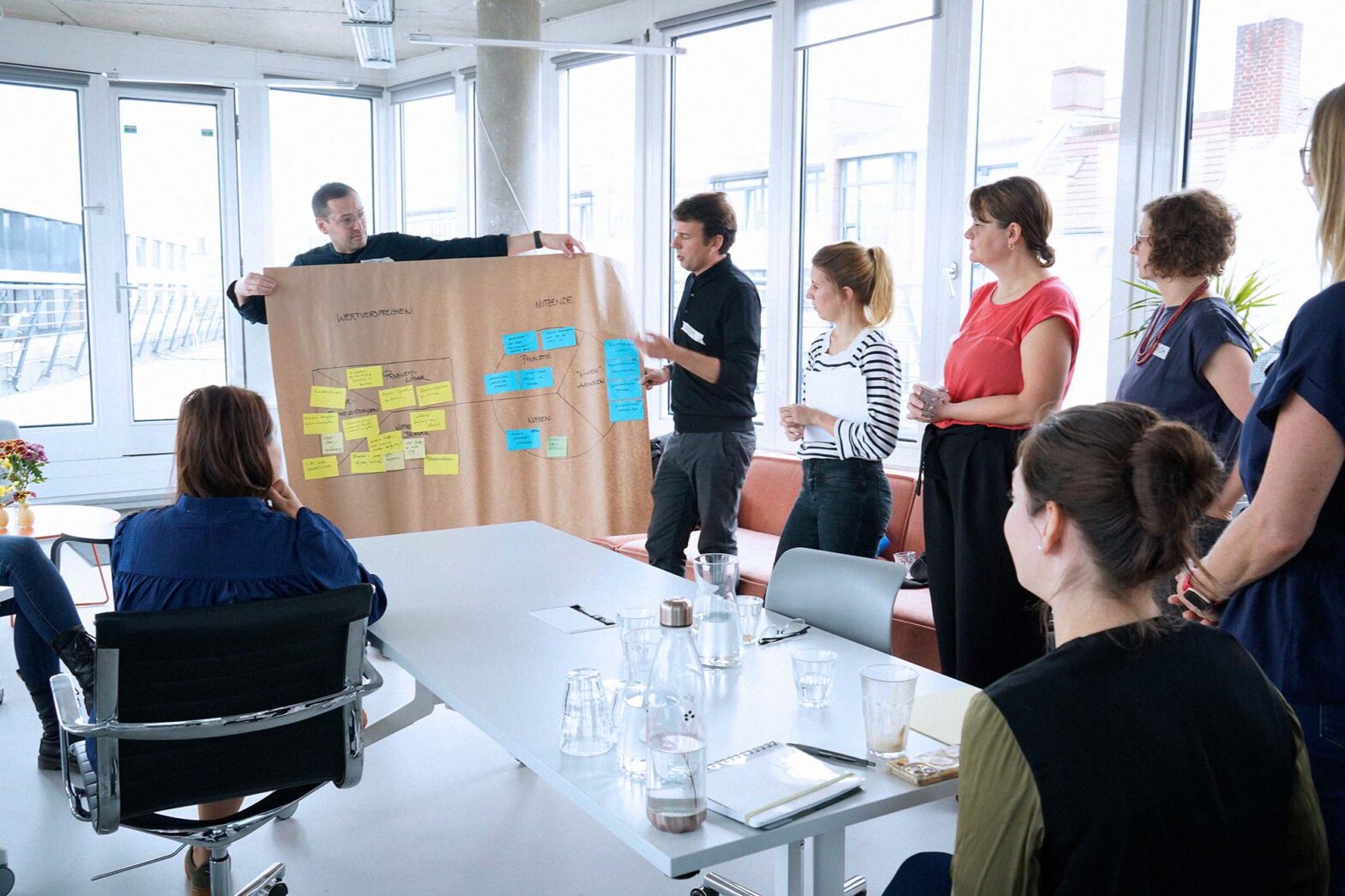Sprinting towards the end of the month and finishing our second objectives trimester, we ran an important Service Standard workshop with colleagues from the Federal Ministry of Justice. Linked to the objective of driving further adoption of the Service Standard, one of the key results was to onboard project partners from 2 projects and make them familiar with it and our ways of working.
Some senior people are already familiar with it, and the Service Standard is anchored in the memoranda of understanding and contracts. So, we developed a complementary session to bring the standard closer and discuss co-ownership for individual standard points.
Workshopping around the Service Standard
We did that via a 3-hour workshop with our 2 ‘Access to Justice’ teams. The format made things tangible, interactive and entertaining for the participants. My colleague Caro and I had to assume some ministerial counterparts weren’t familiar with the standard at all. So, we started with a warm-up around good personal service experiences and rapidly filled value proposition canvases. I then gave a historical overview of international digital government service standards while Caro dipped into tech sociology and framed the Service Standard as a boundary object.
The framing as a boundary object felt novel and valuable to me. Caro articulated how the Service Standard is both blurry and robust simultaneously. For example, it tells us to work agilely – but does not suggest or even prescribe a team to use Scrum as a framework. The standard means different things to different people. It leaves room for interpretation and situational adaption and serves numerous functions simultaneously. So, it can be a cornerstone and boundary object of multiple spheres of work and for various groups of people.
The day before, I helped finish the peer review report for one of the teams. It was the first-ever peer review against the German Service Standard and my first experience facilitating a review or assessment process. Ultimately, it was more editing work than I had anticipated, spending almost a day wrapping up summaries from the 4 peer reviewers. When assessing services against the UK Service Standard as a design assessor, I only had to write my section, and the assessment managers put together the reports. I can now recognise their work for what it must entail.
We shared the report with the service team and asked them to provide feedback. With more maturity, we plan to run the following peer review for the team with an external panel consisting of design, engineering, product and transformation colleagues from other digital units in the German public sector.
For the intermediate report, I had to create new status labels – as ‘met’, ‘partially met’, and ‘not met’ were not sufficient. Our Australian colleagues from the DTA have been using an ‘on track’ status label, which I think works well for alpha and private beta assessments and peer reviews. The problem is that no obvious and suitable German translation fits our context. Or, at least, I have not found it.
Reviewing objectives, discussing organisational setup, and doing retros
The rest of the week was packed with workshops, particularly Thursday.
On Thursday, we looked at cross-discipline objectives and related key results (OKRs) for the coming trimester – or the last 3-month period of the year. After some role changes, it’s the first time we – all 4 heads of delivery disciplines – are doing it together. We have the support of a facilitating senior transformation manager who keeps us on track in the process. He reminded us of the sound principles of well-written OKRs. We started, but developing well-crafted objectives will take a couple more sessions. We have another 4 weeks to finish them.
We spent another part of the day discussing our matrix organisation setup. But we are very much a mixed organisation. Some parts are indeed matrix-style organised, with individuals having a separate people manager and a work manager. The latter is in the team or programme of work. The former is most likely not. That is the case for the delivery part of the organisation, where most designers, product managers, software engineers, transformation managers and user researchers work. When looking at the overall org chart and how the core teams – that includes comms, finance, legal, and people – are structured, things are hierarchical with a couple of levels. So, we started to realise the reality at first and entangle the implications.
The third workshop of the day was our heads of delivery retrospective. To my knowledge, it was the first we had run so far. As we increasingly work together and spend time together, reviewing how we do things, communicate and collaborate with each other is crucial. There is general appreciation and respect for each others’ experience and experience. There are shared values and a relatively common view of the world. We derived some action points, action owners and a plan of running a couple more retros before the year ends.
Beyond my office work, Katrin, Simone and I have been putting some hours into shaping our next Public Service Lab Day in Cologne in mid-November. We already have a good number of signups from a range of government and public sector organisations. We are well-supported by the City of Cologne’s innovation lab. Some content for input talks and workshops is still missing. But we’ll get that settled in the coming weeks.
What’s next
We will spend more time with OKRs next week.
I will spend quite a bit of time with almost all teams as we run various monthly leadership check-ins.
And, on Friday, I will welcome the new Work4Germany fellowship cohort in their first Fellows Friday session.

